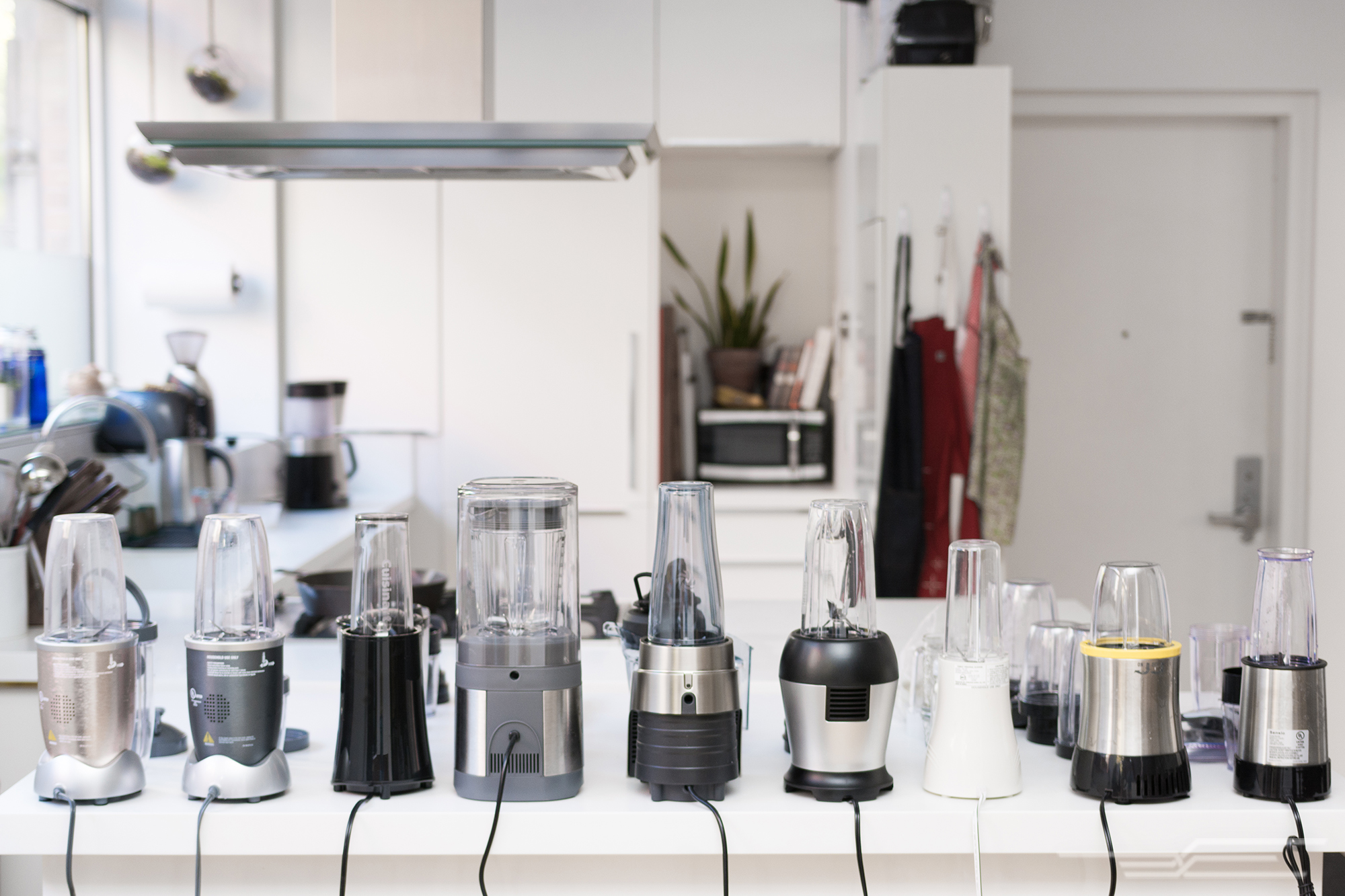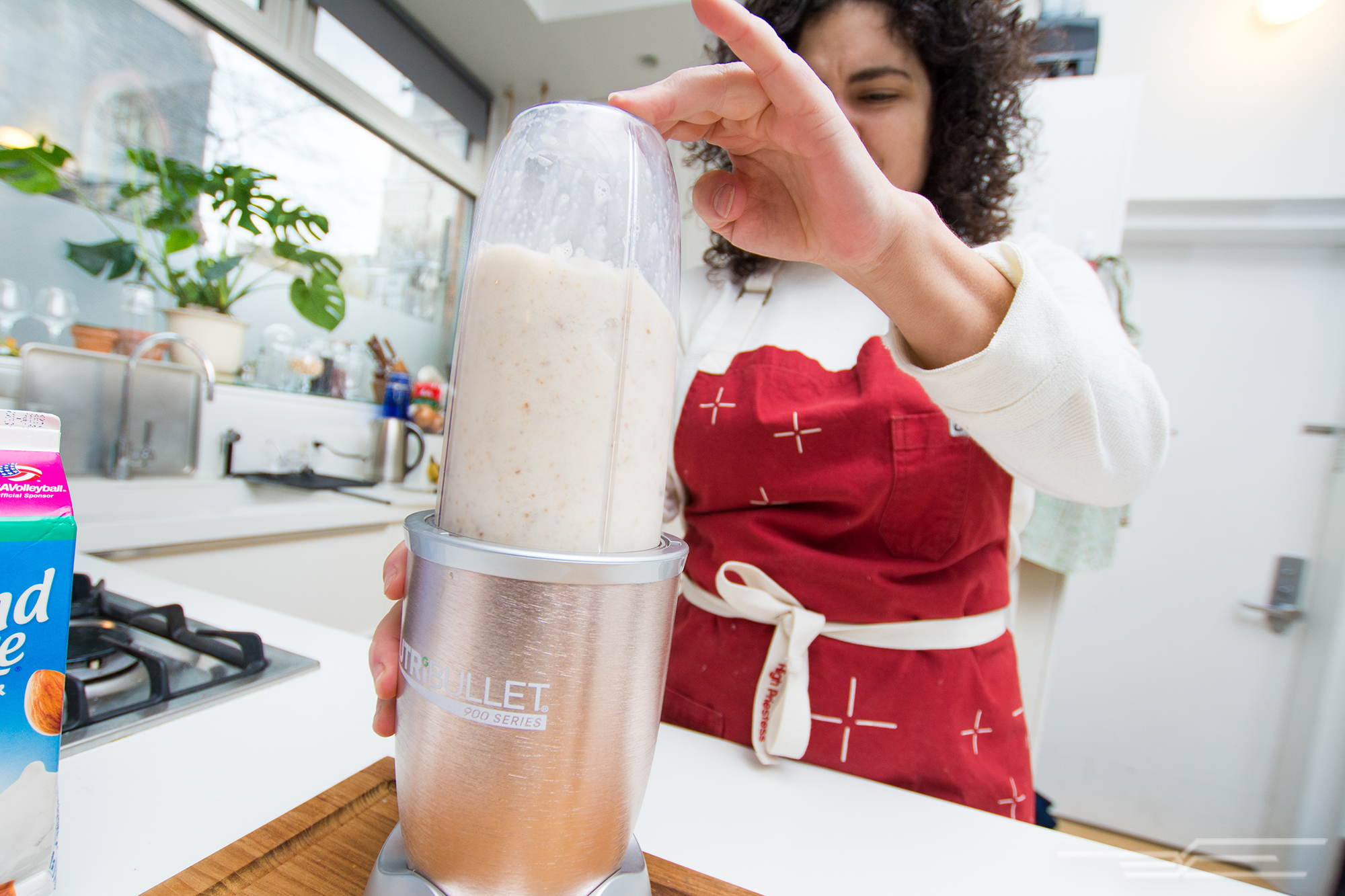The best personal blender
By Lesley Stockton
This post was done in partnership with Sweethome, a buyer’s guide to the best homewares. When readers choose to buy The Sweethome’s independently chosen editorial picks, it may earn affiliate commissions that support its work. Read the full article here.
After spending 20 hours researching two dozen personal blenders and testing 10 models with an expert in our test kitchen, we think the NutriBullet Pro 900 Series offers the best balance of power, simplicity, convenience, and price for most people. We pureed almost 25 pounds of frozen fruit, hearty kale, fibrous ginger, gooey peanut butter, and sticky dates into thick smoothies to come to this conclusion.
Who should buy a personal blender
A personal blender is a convenience item for the dedicated smoothie lover who’s short on time in the morning. If you want to quickly make a morning smoothie and run out the door without having to wash a blender pitcher and lid, a personal blender is for you.
Personal blenders are also good for small jobs like making sauces and dressings, but their motors aren’t as powerful as the ones found in our full-size blender picks. If you want an all-around kitchen workhorse that can puree soups and sauces, and make multiple rounds of frozen margaritas, you should consider getting a full-size blender.
How we picked and tested

The perfect personal blender is powerful, hands-free, and simple to use. We looked for blenders with a small footprint to accommodate small apartments and dorms or people who don’t want a lot of countertop clutter. A sturdy cup with a secure travel lid is a major plus, especially for commuters. Finally, we scoured user reviews to get a read on durability and long-term reliability.
To see how these blenders could handle a thick smoothie, we blended frozen bananas, strawberries, raspberries, blackberries, and juice for the recommended running time of each specific model. If any blender couldn’t make a puree in that amount of time (usually one minute) or the base began to get noticeably hot, it was disqualified.

For round two, we blended curly kale and water, then strained the mixture through a fine sieve. We evaluated the amount of solids and fibers as well as particle size. To see if these blenders could tackle tough fiber, we made a smoothie with ½-inch-thick pieces of ginger and frozen peaches (all the smoothies from this test had noticeable fibers). We also made a hearty shake from dates, banana, peanut butter, ice, and almond milk. Dates are difficult to puree into a smoothie, and we found that each of our picks could handle the task.
After blending each smoothie, we attached the travel lid (where applicable) and gave each tumbler a vigorous shake over the sink to check for leaks. We also tried to drink thick smoothies from the opening in the lids. We also took decibel readings while the blenders were full and running because we read some complaints about the motors being too loud. For more on how we picked and tested, see our full guide.
Our pick

Out of the models we tested, the NutriBullet Pro 900 has the best balance of power, ease of use, and price. It blended everything we threw at it without straining. The Pro comes with a secure-fitting travel lid, and the large cup has a blending capacity of 24 ounces. It’s also the only blender we tested that includes two blade assemblies (when ordered through Amazon). With a 5½-inch-diameter footprint, it’ll tuck away neatly on most kitchen counters, and its 15-inch height clears standard upper cabinets. The NutriBullet Pro comes with a limited one-year warranty, but a four-year extended warranty is available.
The NutriBullet Pro had no problem blending thick, spoonable smoothies. Our banana-berry smoothie came out lump-free. The kale puree wasn’t the finest blend we saw, but it wasn’t as fibrous as the kale from the Nutri Ninja. The NutriBullet blended dates well, leaving only a few small, pleasantly chewy pearls in the bottom of the cup that didn’t clog the straw. None of the personal blenders did an exceptional job on fresh ginger fiber, but that’s an extremely tough thing to break down.
The NutriBullet’s travel lid screws on tight, and a hinged plastic cap snaps over the opening to make it easy for commuters to travel without the risk of spilling all over themselves. We shook the sealed cup over the sink and saw no leaks. We will test the effectiveness of the travel lid long-term to see how it fares in a backpack or a tote on hectic commutes.
A small, durable blender

The Tribest PB-150 is a durable, no-frills personal blender. We like the Tribest for its tiny footprint and minimal clutter. At 16 ounces, the blending cups are smaller than those on both the NutriBullet and Breville blenders, and the travel lid doesn’t have a seal, so you can’t throw it in a bag. The Tribest made thinner smoothies than our top or upgrade picks because it required more liquid to get a consistent puree. That said, we think the Tribest will make a good companion appliance to a full-size blender for handling smaller tasks.
A sleek and powerful blender

In our tests, the Breville Boss To Go delivered the thickest, silkiest smoothies. It’s super powerful and easy to use out of the box. The Breville is the only one of our top picks that has a metal base and driveshaft. Because the Boss To Go is brand new in the US—it debuted in 2016—it doesn’t have a ton of user or editorial reviews at this time. However, we feel confident about this recommendation because of Breville’s reputation for making quality appliances and from our own testing experience. At around $160 at the time of writing, it’s a splurge, but if you want sleeker design and velvety smoothies, it’s the one to buy.
This guide may have been updated by The Sweethome. To see the current recommendation, please go here.
Note from The Sweethome: When readers choose to buy our independently chosen editorial picks, we may earn affiliate commissions that support our work.
By Lesley Stockton This post was done in partnership with Sweethome, a buyer’s guide to the best homewares.
(103)




